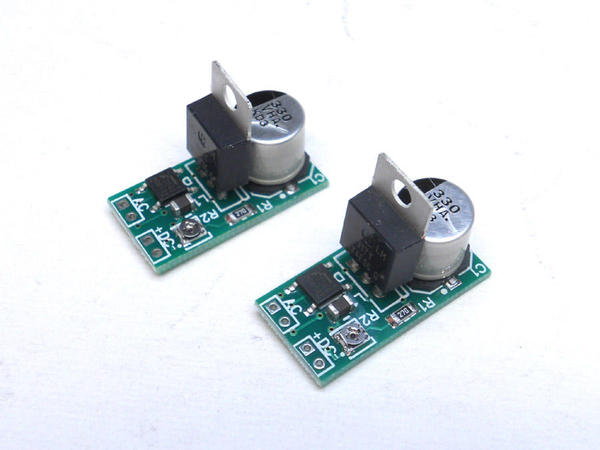HENNING'S TRAINS & JW&A (gunrunnerjohn) would like to introduce a new Passenger Car LED Lighting Kit
Item #20100, Passenger Car LED Lighting Kit
Passenger Car LED Lighting Kit
Enhance your passenger cars with low power adjustable lighting.
Contains components to light two 12 to 21 inch passenger cars.
This LED lighting kit is a set of components to allow you to easily upgrade your passenger cars to low current LED lighting. LED lighting offers a number of enhanced features over the incandescent lighting currently used in most production O-gauge passenger cars. This kit has been designed with command operation in mind. The lighting module works correctly when supplied with from 12 to 19 volts AC..
Features:
- Low Power LED Lighting
- Easy Solderless Installation
- MTH DCS Compatible
- Adjustable Lighting Intensity
- Flicker Free Operation
Developed by John Will & Associates (gunrunnerjohn)
Any questions or comments contact us at lighting@will-enterprises.com
For a limited time (until end of year)we are offering an introductory price to all of our OGR friends a discounted price of $29.99 by entering the promo code: OGR20100 during checkout.
Also now available
Item #20110, LED Constant Current Lighting Regulator
Available Now Exclusively through Henning's Trains
LED Constant Current Lighting Regulator, 2 Pcs.
The LED Constant Current Lighting Regulator (LEDCCLR) is a board designed to convert track voltage AC to constant current DC for LED lighting. LED lighting offers a number of enhanced features over the incandescent lighting currently used in in most O-gauge accessories and rolling stock. The lighting module works correctly when supplied with from 5 to 19 volts AC, the minimum operating voltage is dependent on the configuration of the LEDs connected to the module.
LEDCCLR Features:
- Requires a small fraction of the power of conventional lighting
- Provides adjustable lighting intensity
- Storage capacitor on module provides flicker-free operation
- Designed to be MTH DCS compatible
- Simple connections to power and LEDs
The LEDCCLR is fabricated on a printed circuit board with the dimensions of 1.1" x 0.55" in size. The overall LEDCCLR height including components is approximately 0.8" tall.
The LEDCCLR can supply constant current to one or more LEDs from 5ma to 45ma, the current is adjustable by a small adjustment potentiometer on the board. The LED’s can be connected either in series or parallel to accomplish the lighting goals. The LEDCCLR requires AC voltage higher than the DC voltage requirement of the connected LEDs. For example, three white LED’s connected in series require about 9 volts DC, the LEDCCLR with this configuration would require 10 volts or more of AC power for correct operation.
An easy way to mount the LEDCCLR is by use of double-sided foam tape to any convenient location in the car or accessory that it is to be employed in.
The LEDCCLR requires very simple connections. Four solder connection points are provided to the PCB, they’re illustrated below on the right hand side labeled AC and DC.
The AC connections are for incoming AC (or DC) power to the regulator circuit. The DC connections are for the constant current output to the LED(s) being powered by the board. Note the + pin on the DC connector goes to the positive side of the attached LED(s). Note that there is no common ground on the DC side of the regulator, so neither of the output wires should be connected to AC common.
Includes two (2) LEDCCLR boards as shown.
Once again for a limited time (until end of year)we are offering an introductory price to all of our OGR friends a discounted price of $15.99 by entering the promo code: OGR20110 during checkout.








